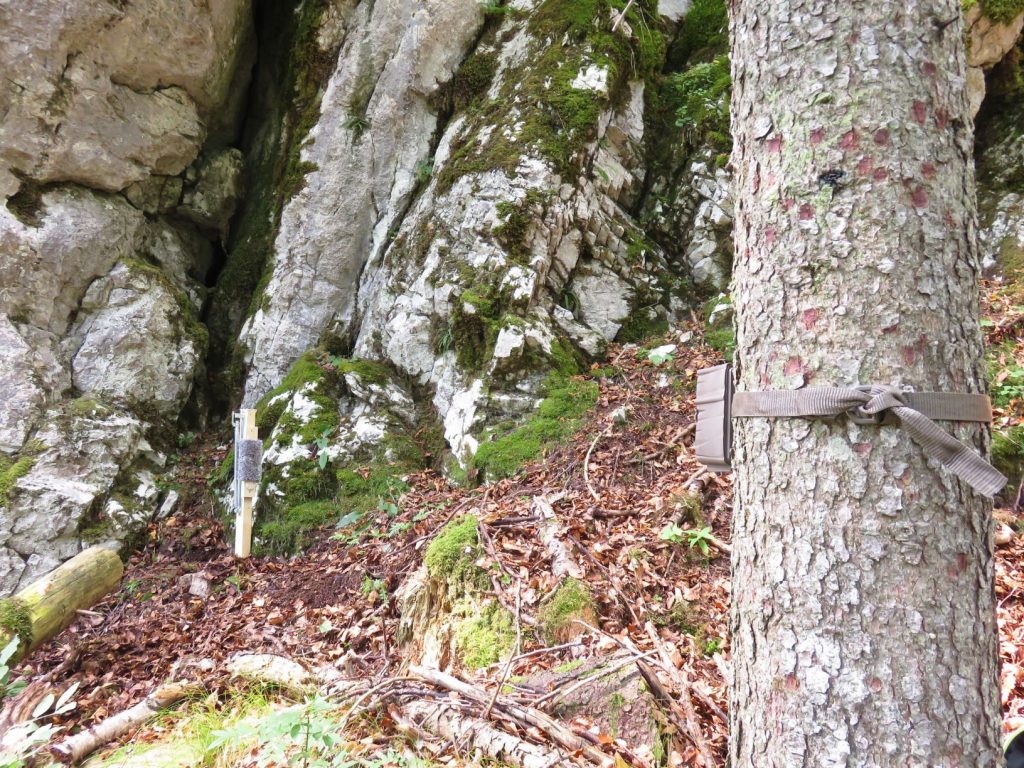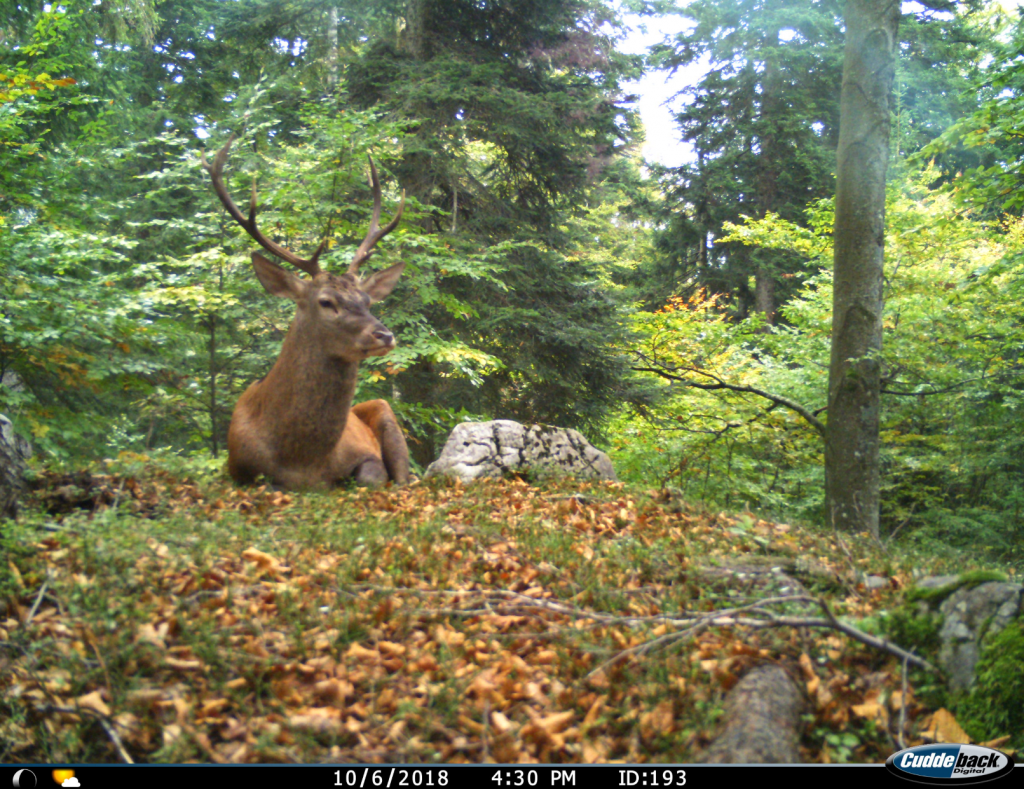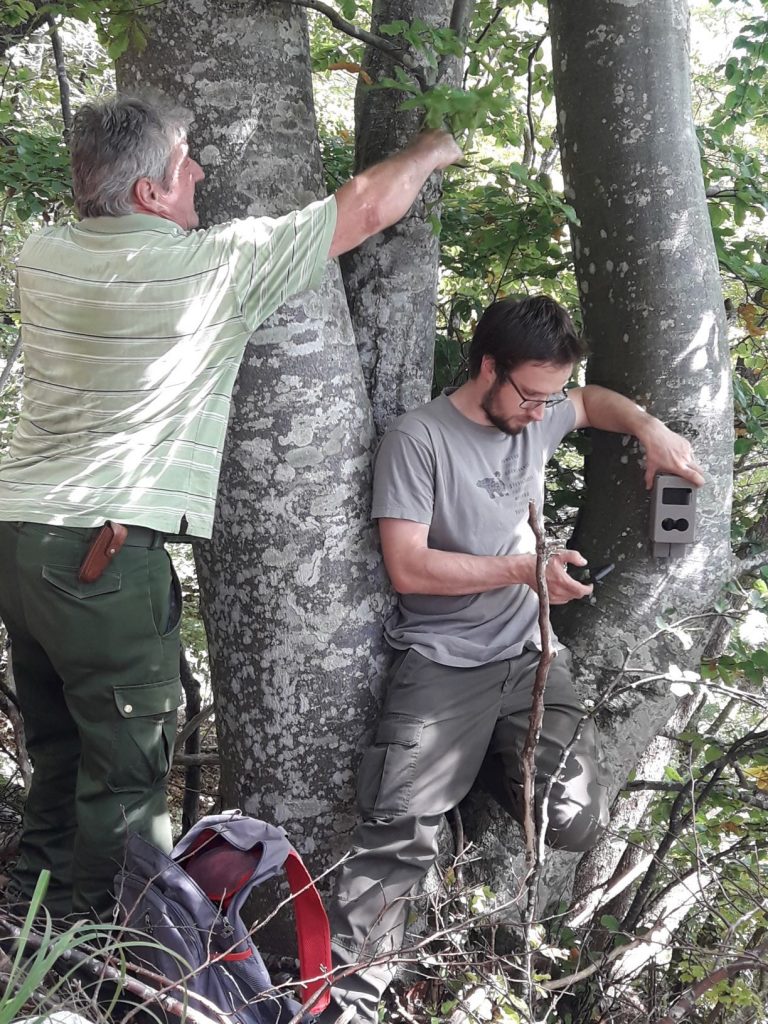For successful lynx reinforcement we established systematic monitoring of the species in the Dinaric area, and its largest activity represents monitoring with automatic photo-traps. To a lesser extent, we carried out also genetic monitoring with hair-traps and snow tracking.

Photo trap and hair trap set in the forest. Photo: LIFE Lynx
In the frame of these activities, we collaborate tightly with hunters, the key stakeholders in the process of saving the Dinaric-SE Alpine lynx population from extinction. For establishing a fruitful collaboration, we started with a “top-down” approach: first, we contacted the leaders of regional hunting associations, then the leaders of hunting clubs and afterward interested hunters individually. We were glad to receive positive feedback from 42 hunting clubs. Together, we set the photo traps on the most appropriate locations and we kindly asked hunters for their help with the checking of cameras and hair-traps and for informing us about the camera recordings and other information on the lynx presence in their hunting grounds. Mutually also hunters benefited with the new knowledge on one of the most elusive mammals of our forests and gained the whole new perspective on the animal community on their hunting grounds.

Photo traps capture all forest wildlife, interesting for the hunters. Photo: LIFE Lynx
A respectful relationship with the hunters enables us to establish trust and maintain expertise. A positive consequence of trustful and systematic cooperation is also awareness- and information transfer about project activities within the hunting community and readiness of hunting clubs outside the Dinaric area to collaborate with us.

Setting a photo trap with a local hunter. Photo: LIFE Lynx
Hunters’ readiness for cooperation and their thorough work over the entire monitoring season made the gathering of valuable data about lynx in the Slovenian Dinaric forests possible. Data of such quality are extremely valuable for the project, as they support expert- and scientific base for the lynx translocations. Yet, this extraordinary result is not important for successful lynx translocation only, but also for the long-term conservation and survival of this lynx population.
